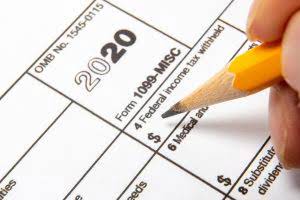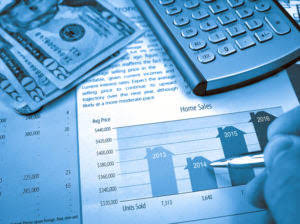
Double Declining Balance (DDB) depreciation is a method of accelerated depreciation that allows for greater depreciation expenses in the initial years of an asset’s life. As its name implies, the DDD balance method is one that involves a double depreciation rate. There are two types of accelerated depreciation methods, and both involve a multiple of the SLD balance method. The depreciation double declining balance method rates in DDD balance methods could either be 150% or 200% or even 250% of the SLD method. Various software tools and online calculators can simplify the process of calculating DDB depreciation. These tools can automatically compute depreciation expenses, adjust rates, and maintain depreciation schedules, making them invaluable for businesses managing multiple depreciating assets.

E-Commerce Innovations to Implement in Your Business Right Now
Here’s the depreciation schedule for calculating the double-declining depreciation expense and the asset’s net book value for each accounting period. In case of any confusion, you can refer to the step by step explanation of the process below. The final step before our depreciation schedule under the double declining balance method is complete is to subtract our ending balance from the beginning balance to determine the final period depreciation expense.
Declining Balance Depreciation Example
- Remember, in straight line depreciation, salvage value is subtracted from the original cost.
- To calculate the depreciation expense of subsequent periods, we need to apply the depreciation rate to the laptop’s carrying value at the start of each accounting period of its life.
- Because the equipment has a useful life of only five years, it is expected to lose value quickly in the first few years of use.
- A vehicle is a perfect example of an asset that loses value quickly in the first years of ownership.
- Calculating the annual depreciation expense under DDB involves a few steps.
It automates the feedback loop for improved anomaly detection and reduction of false positives over time. We empower accounting teams to work more efficiently, accurately, and collaboratively, enabling them to add greater value to their organizations’ accounting processes. The next chart displays the differences between straight line and double declining balance depreciation, with the first two years of depreciation significantly higher. Whether you are using accounting software, a manual general ledger system, or spreadsheet software, the depreciation entry should be entered prior to closing the accounting period.
Double declining balance vs. the straight line method

Depreciation in the year of disposal if the asset is sold before its final year of useful life is therefore equal to Carrying Value × Depreciation% × Time Factor. No depreciation is charged following the year in which the asset is sold. It is important to note that we apply the depreciation rate on the full cost rather than the depreciable cost (cost minus salvage value). Therefore, it is more suited to depreciating assets with a higher degree of wear and tear, usage, or loss of value earlier in their lives. Get instant access to video lessons taught by experienced investment bankers.
Increase your desired income on your desired schedule by using Taxfyle’s platform to pick up tax filing, consultation, and bookkeeping jobs. Tickmark, Inc. and its affiliates do not provide legal, tax or accounting advice. The information provided on this website does not, and is not intended to, constitute legal, tax or accounting advice or recommendations. All information prepared on this site is for informational purposes only, and should not be relied on for legal, tax or accounting advice. You should consult your own legal, tax or accounting advisors before engaging in any transaction.
- If the beginning book value is equal (or almost equal) with the salvage value, don’t apply the DDB rate.
- This not only provides a better match of expense to the car’s usage but also offers potential tax benefits by reducing taxable income more significantly in those initial years.
- Bottom line—calculating depreciation with the double declining balance method is more complicated than using straight line depreciation.
- Knowing the right forms and documents to claim each credit and deduction is daunting.
- If, for example, an asset is purchased on 1 December and the financial statements are prepared on 31 December, the depreciation expense should only be charged for one month.
We help eCommerce businesses master their finances.
HighRadius offers a cloud-based Record to Report Suite that helps accounting professionals streamline and automate the financial close process for businesses. We have helped accounting teams from around the globe with month-end closing, reconciliations, journal entry management, intercompany accounting, and financial reporting. Leveraging AI in accounting allows businesses to focus on strategic decision-making, reduce errors, and enhance overall financial management.

With your second year of depreciation totaling $6,720, that leaves a book value of $10,080, which will be used when calculating your third year of depreciation. The following table illustrates double declining depreciation totals for the truck. He has a CPA license in the Philippines and a BS in Accountancy graduate at Silliman University. Typically, accountants switch from double declining to straight line in the year when the straight line method would depreciate more than double declining.
- For reporting purposes, accelerated depreciation results in the recognition of a greater depreciation expense in the initial years, which directly causes early-period profit margins to decline.
- The depreciation expense recorded under the double declining method is calculated by multiplying the accelerated rate, 36.0% by the beginning PP&E balance in each period.
- An exception to this rule is when an asset is disposed before its final year of its useful life, i.e. in one of its middle years.
- These tools can quickly adjust book values, generate detailed financial reports, and adapt to various depreciation methods as needed.
- You also want less than 200% of the straight-line depreciation (double-declining) at 150% or a factor of 1.5.
- Choosing the right depreciation method is essential for accurate financial reporting and strategic tax planning.
How to Calculate Depreciation in DDB Method
This method is best suited for assets that lose a big portion of their value at the beginning of their useful life, cars or any items that become obsolete quickly are good examples. Businesses choose to use the Double Declining Balance Method when they want to accurately reflect the asset’s wear and tear pattern over time. HighRadius Autonomous Accounting Application consists of End-to-end Financial https://www.bookstime.com/ Close Automation, AI-powered Anomaly Detection and Account Reconciliation, and Connected Workspaces. Delivered as SaaS, our solutions seamlessly integrate bi-directionally with multiple systems including ERPs, HR, CRM, Payroll, and banks. This method takes most of the depreciation charges upfront, in the early years, lowering profits on the income statement sooner rather than later.

